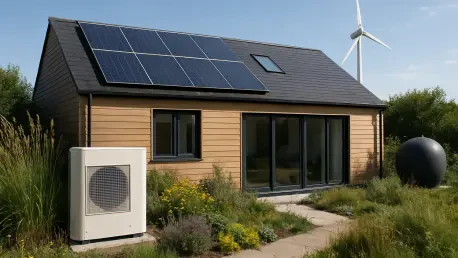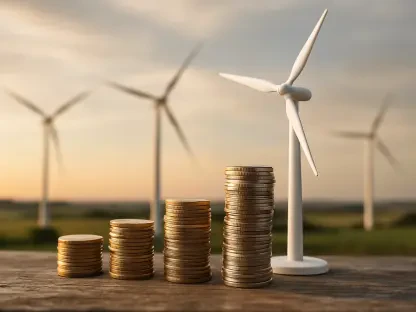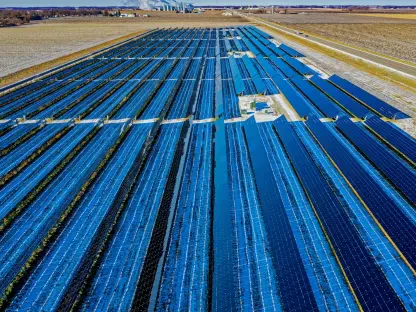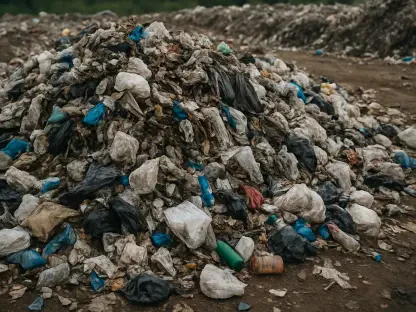As Australia navigates the pressing challenge of achieving net zero emissions, the nation stands at a critical crossroads where environmental imperatives must align with economic realities, and the path forward requires innovative and actionable strategies. The Productivity Commission’s recent report, Investing in Cheaper, Cleaner Energy and the Net Zero Transformation, sheds light on several policy gaps, yet it falls short of addressing some transformative strategies that could dramatically cut costs and accelerate progress. This article explores four underutilized levers that hold the potential to redefine Australia’s energy landscape. By focusing on energy efficiency, regulatory reform, methane reduction, and a critical reassessment of fossil fuel projects, a clearer, more affordable path to net zero emerges. These approaches are not mere theoretical concepts but actionable solutions that address systemic inefficiencies while balancing sustainability with economic productivity. The urgency to act is palpable, as both households and industries bear the burden of high energy costs amidst a warming climate.
Unlocking Potential Through Energy Efficiency and Flexibility
The pursuit of net zero emissions in Australia demands innovative solutions, and enhancing energy efficiency paired with flexible consumption patterns offers one of the most immediate and impactful opportunities. According to the International Energy Agency, doubling global energy efficiency improvements could deliver the largest emissions reductions by 2030, yet Australia’s efforts have lagged significantly. Households suffer from outdated appliances, with over 1.7 million inefficient units installed annually, leading to more than $3 billion in wasted energy costs. Transitioning to modern heat-pump technologies, which use a fraction of the energy of traditional systems, could save more electricity than the additional demand created by shifting from gas to electric devices. This shift not only curbs emissions but also alleviates financial strain on consumers, presenting a dual benefit that policymakers must prioritize to drive meaningful change in the energy sector.
Beyond household savings, the industrial sector holds untapped potential for efficiency gains that could reshape Australia’s emissions profile. Programs like the Australian Alliance for Energy Productivity’s initiative in New South Wales have revealed staggering inefficiencies, such as 80-90% energy waste in compressed air systems. The closure of the Energy Efficiency Opportunities program over a decade ago left a void in policy support, allowing inefficiencies to persist unchecked. Additionally, aligning energy consumption with peak solar generation through flexible load management—think hot water systems and air conditioning operating during daylight hours—can reduce evening grid stress and minimize the need for costly infrastructure upgrades. Reviving targeted government interventions beyond the Safeguard Mechanism is essential to build capacity and drive industrial transformation, ensuring that efficiency becomes a cornerstone of the net zero strategy.
Overhauling Electricity Network Regulations for Equity and Innovation
Electricity affordability remains a pressing concern for many Australians, yet current network regulations perpetuate inefficiencies that inflate costs unnecessarily. Over the past decade, distribution and transmission networks have reaped $15 billion in supernormal profits on top of $17.6 billion in allowed earnings, burdening consumers with higher bills. These regulations, rooted in outdated monopoly assumptions, fail to recognize the potential of distributed energy resources (DER) like rooftop solar and household batteries to provide critical network services. A fundamental review of economic regulation is urgently needed to redesign the system, prioritizing productivity and affordability while aligning with the broader energy transition. Such reform could dismantle the financial barriers that hinder households and businesses, paving the way for a more equitable energy market.
The transformative potential of household batteries further underscores the need for regulatory change, as these technologies can significantly reduce peak demand during extreme weather periods. When paired with well-designed tariffs and incentives, batteries could minimize or even eliminate the need for large-scale grid investments, enhancing stability and lowering costs across the board. Current pricing structures, however, often discourage adoption by failing to reward consumers for contributing to grid resilience. By reimagining how electricity networks operate and integrating DER into the regulatory framework, Australia can harness technological innovation to create a more responsive and cost-effective energy system. This lever is not just about cutting excess profits—it’s about building a future where the grid supports renewable energy and consumer needs in equal measure.
Targeting Methane Emissions for Rapid Climate Impact
Among the most potent yet addressable contributors to Australia’s greenhouse gas footprint are fugitive methane emissions from coal and gas extraction, which account for up to 25% of the national total. Methane, while short-lived in the atmosphere, has a far greater warming effect than carbon dioxide, making its reduction a quick and effective way to mitigate climate change. Capturing this gas also holds economic value, with an estimated 76 petajoules worth nearly $950 million annually—enough to meet significant energy demands. Despite low abatement costs, policies like the Safeguard Mechanism lack the teeth to drive meaningful reductions, with projections showing stable methane levels through 2035. Stronger, targeted measures to capture and utilize this resource could yield both environmental benefits and economic gains, positioning this lever as a critical priority for immediate action.
The underreporting of methane emissions further complicates the issue, as actual levels may exceed official estimates, amplifying the urgency for robust monitoring and intervention. Beyond the climate impact, failing to address these emissions misses a chance to bolster energy security by repurposing captured methane for productive use. Current policy frameworks fall short of incentivizing the necessary technological and operational shifts in the fossil fuel sector, leaving a significant gap in Australia’s net zero strategy. By implementing stricter regulations and investing in capture technologies, substantial progress can be made in a short timeframe, offering a rare opportunity to align short-term wins with long-term sustainability goals. This approach demands attention to ensure that the full potential of methane reduction is realized before the window for impactful change narrows further.
Reevaluating Fossil Fuel Projects for Sustainable Growth
The development of new coal and gas projects, particularly liquefied natural gas (LNG) for export, poses significant risks to both Australia’s economy and its environmental commitments. With a looming global LNG supply glut, additional projects could depress prices, undermine existing operations, and exacerbate financial losses. Past LNG developments in eastern Australia have already tripled domestic gas prices, contributing to industrial closures and reduced gas-fired power generation. Moreover, the high emissions from these projects cannot be fully offset by carbon capture and storage, locking in long-term environmental damage. A rigorous cost-benefit analysis of such ventures is essential to weigh short-term economic gains against the broader implications for energy security and climate targets, ensuring that decisions prioritize sustainable growth over fleeting profits.
This critical reassessment extends beyond immediate financial risks to address the broader impact on Australia’s net zero trajectory. Continued investment in fossil fuel infrastructure threatens to divert resources from renewable energy development, slowing the transition to cleaner alternatives. The ripple effects of high domestic gas prices have already strained industries, highlighting the need for a strategic pivot toward energy sources that align with long-term goals. Policymakers must scrutinize these projects through a lens of economic and environmental accountability, recognizing that perpetuating reliance on coal and gas undermines global commitments. By redirecting focus to sustainable investments, Australia can avoid the pitfalls of oversupply and emissions-intensive development, fostering a more resilient and forward-looking energy economy.
Building a Comprehensive Path to Net Zero
Reflecting on the journey so far, it’s clear that the four levers discussed offer a powerful framework to address Australia’s net zero ambitions with pragmatism and innovation. Each strategy—whether enhancing energy efficiency, reforming electricity regulations, reducing methane emissions, or reevaluating fossil fuel projects—targets distinct yet interconnected challenges, weaving together a holistic approach. Looking ahead, the next steps involve integrating these solutions into national policy with urgency, ensuring that technological advancements and systemic reforms work in tandem. Collaboration between government, industry, and communities will be vital to implement incentives, strengthen regulations, and drive investment in cleaner alternatives. By embracing these overlooked opportunities, Australia can chart a course toward a sustainable future that balances environmental stewardship with economic vitality, setting a precedent for others to follow.









